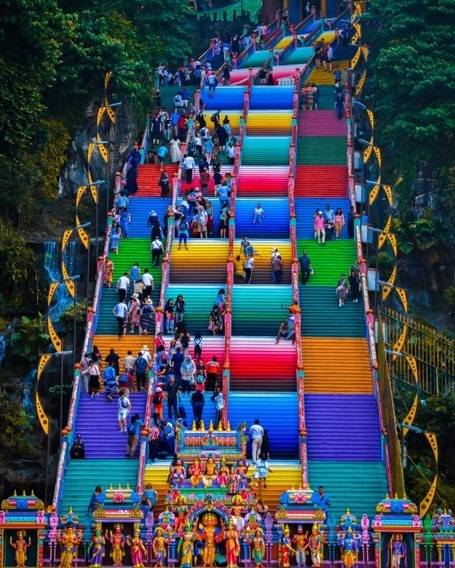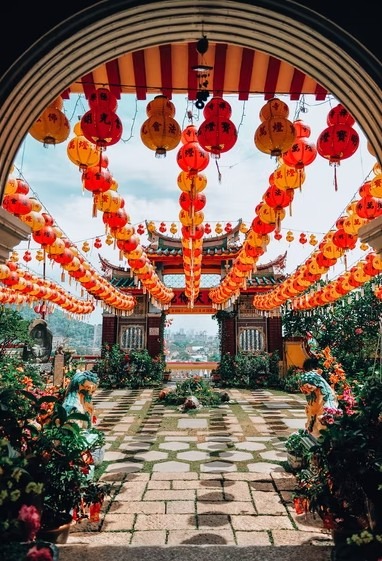In addition to having some of Asia’s most captivating, cutting-edge, and sophisticated cities, Malaysia is renowned for its incredible biodiversity and natural beauty. There are top travel safety tips when visiting Malaysia that you need to know. The nation’s capital, Kuala Lumpur, is an intriguing fusion of the old and the new, while Georgetown, Malacca, and Ipoh have charming historic districts with exquisitely preserved colonial architecture. While the remote cities of Sabah and Sarawak in Malaysian Borneo are gateways to stunning national parks and remote indigenous village communities, Kuala Terengganu, Kota Bharu, and Alor Setar are bastions of Malay culture known throughout the region as centers for traditional arts and crafts. Furthermore, you can try the top foods when visiting Malaysia. Here is our guide to the top cities in Malaysia.
Top Cities in Malaysia
1. Kuala Lumpur
In less than a century, Kuala Lumpur, the capital and largest city of Malaysia, has grown from a modest trading outpost to one of the continent’s most cosmopolitan cities. The twin towers of the Petronas building, which were the tallest structures in the world when they were finished in 1998, dominate the modern skyline. Traditional Malay and Chinese neighborhoods coexist with opulent Victorian, Mughal, and Art Deco structures, adding to Kuala Lumpur’s charm. Highlights include the serene Masjid Jamek mosque, the National Monument, Chinatown, and KL Tower, which offers sweeping views of the city and is home to the largest flagpole in the world as well as some of the city’s finest colonial architecture, including the Royal Selangor Club and St. Mary’s Church.
2. Georgetown (Penang)
Georgetown, the largest town on the island of Penang, is a gem—a beguiling maze of busy streets, vibrant markets, and ancient structures. Georgetown, in contrast to other Malaysian cities, has successfully maintained a large portion of its history, which is most obviously evident in the variety of its architecture. Alongside pre-war British structures and those built by the Indian, Thai, and Burmese communities stand Chinese temples and wooden homes. Every neighborhood has a unique vibe, and part of the fun of visiting Georgetown is getting lost in its alleyways, stopping at cafes and curio shops, and discovering roadside shrines. Fort Cornwallis, the Jubilee Clock Tower, and the Eastern & Oriental Hotel serve as symbols of this period in the city’s history. Georgetown is also Malaysia’s oldest British settlement.
3. Kuching
Kuching, the charming capital of remote Sarawak, is known as the “Land of the Hornbill.” Kuching, which stretches along the Sarawak River, has a charming waterfront and some exquisitely preserved colonial-era buildings. Kuching’s population is diverse, with a predominance of Malay and Chinese people but also notable Indian and native Dayak communities, much like Malaysian society as a whole. Highlights include Fort Margarita, which was built by Charles Brooke, Rajah of Sarawak, in the 1870s, the Astana palace, and 19th-century Chinatown. The renowned Sarawak Museum, which opened in 1891 and is constructed in the style of a French town hall, is another attraction. Three significant national parks, including Gunung Gading National Park, and the Semenggoh Orangutan Rehabilitation Center are located close to Kuching.
4. Malacca
Malacca, a cosmopolitan port city that was first inhabited at the beginning of the 15th century, was for many years one of the most prosperous and significant cities on the Malay Peninsula. The town quickly established itself as the region’s main port thanks to its advantageous location at the Straits of Malacca’s narrowest point, establishing trade connections with Ming China, the Indian Subcontinent, and Arabia through the trade of textiles, spices, silk, sandalwood, and tin. This greatly increased the town’s wealth, which attracted European colonial powers. Over the ensuing centuries, Malacca was controlled by the Portuguese, Dutch, and British. Malacca still retains its striking Dutch colonial core, blatant British and Portuguese ancestry, and vibrant Chinatown, continuing the nation’s 500-year relationship with the city.
5. Ipoh
Ipoh, which is north of Kuala Lumpur, is much more than just a starting point for trips to the Cameron Highlands. There is a lot to see and do in Ipoh, which is home to some of the best colonial architecture in Malaysia, lovely Buddhist temples, a gorgeous setting, and a renowned food scene. Chinatown’s maze of charming lanes and wooden storefronts coexist with grand British structures, restaurants, cafes, bars, and boutiques in what is arguably the country’s most well-preserved Old Town. Outside of the city, the impressive Perak Tong cave complex is one of Malaysia’s largest Chinese temples and is well worth a visit. Perak Tong is a significant pilgrimage site where numerous lavish temples have been constructed into the secret caverns and grottoes of a limestone hill in the 1920s by a Buddhist priest from China.
6. Lahad Datu and the Danum Valley
The unassuming town of Lahad Datu serves as both a hub for ecotourism and a gateway to the Danum Valley Conservation Area’s virgin rainforests. The Danum Valley is a vast, untouched region of primary lowland rainforest, and its significance to ecology and the environment is immeasurable. This area is home to some of the most endangered species on the planet, including the Sumatran rhinoceros, clouded leopard, orangutan, sun bear, langur, long-tailed macaque, and Bornean pygmy elephant. The Danum Valley is a haven for hundreds of different tropical bird species, many of which are endemic to Borneo, including the Bornean ground-cuckoo, the Bornean bristlehead, Bulwer’s pheasant, and eight different species of hornbill.
7. Kota Kinabalu
The Sabah state capital, Kota Kinabalu, is situated on Borneo island in Malaysia. The British North Borneo Chartered Company founded a small trading settlement in 1881 on Gaya Island (which can be seen across the bay from the present-day city). A few years later, the fledgling town was moved to the mainland and given the name Jesselton after one of the company directors. The town, in contrast to Sandakan, remained a sleepy backwater for the following 50 years until it was captured by the Japanese during World War II. The city was renamed Kota Kinabalu after the war and developed as a base to visit the coral reefs of Tunku Abdul Rahman National Park and the mountains covered in the jungle in Kinabalu National Park.
8. Kota Bharu
Kota Bharu, the capital of Kelantan and a center of Malay culture, is located in the far north of Malaysia’s continental territory, not far from the Thai border. The city, which is located on the South China Sea and is largely isolated from the rest of the peninsula, developed a maritime trading network over many years that connected Siam to Funan (modern-day South East Asia). Although Kota Bharu is more conservative than many other Malaysian regions, life there also has a strong Islamic influence. One can experience this culture primarily through the arts and crafts, such as batik painting, woodcarving, traditional dance, and shadow puppetry. Highlights of the city include the magnificent Central Market, the handicraft market at Kampung Kraftangan, and the former royal palaces Istana Batu and Istana Jahar, both of which can now be visited.
9. Sandakan
Sandakan, which is situated in Sabah in the far northeastern corner of Borneo, has long served as a center for trade and, more recently, as a base from which tourists can explore both the interior and coast. Wood, beeswax, pearls, and edible bird nests (exported to China and made into bird’s nest soup) were Sandakan’s main sources of wealth, and the town drew people looking for their fortune from as far away as Africa, Arabia, Europe, and Japan. Sandakan was heavily bombed during the Second World War due to its strategic location, but the fish market, Australian war memorial, St. Michael’s Church, and two 130-year-old Chinese temples are all worth seeing. Travel inland from Sandakan to take a Kinabatangan River cruise, participate in a jungle hike, or visit the Sepilok Orangutan Rehabilitation Center.
10. Kuala Terengganu
Kuala Terengganu has been a sleepy fishing port and textile hub for centuries, and it is a traditional city that receives little foreign tourism. The discovery of offshore oil and gas in the 1980s brought Kuala Terengganu great prosperity, and the city has since expanded rapidly. Modern construction hasn’t, however, harmed the city’s personality or charm. Shiny skyscrapers cozily adjoin Chinatown’s narrow streets, the chic harbor is close to the city’s original kampong stilt houses, and new parks and promenades add to the relaxed ambiance. Kuala Terengganu, which is in the northeastern part of the Malay Peninsula, is well known for the high quality of its textiles, particularly its silk sarongs, pine mats, and batiks. It’s also a good starting point for trips to the east coast’s islands and beaches.


